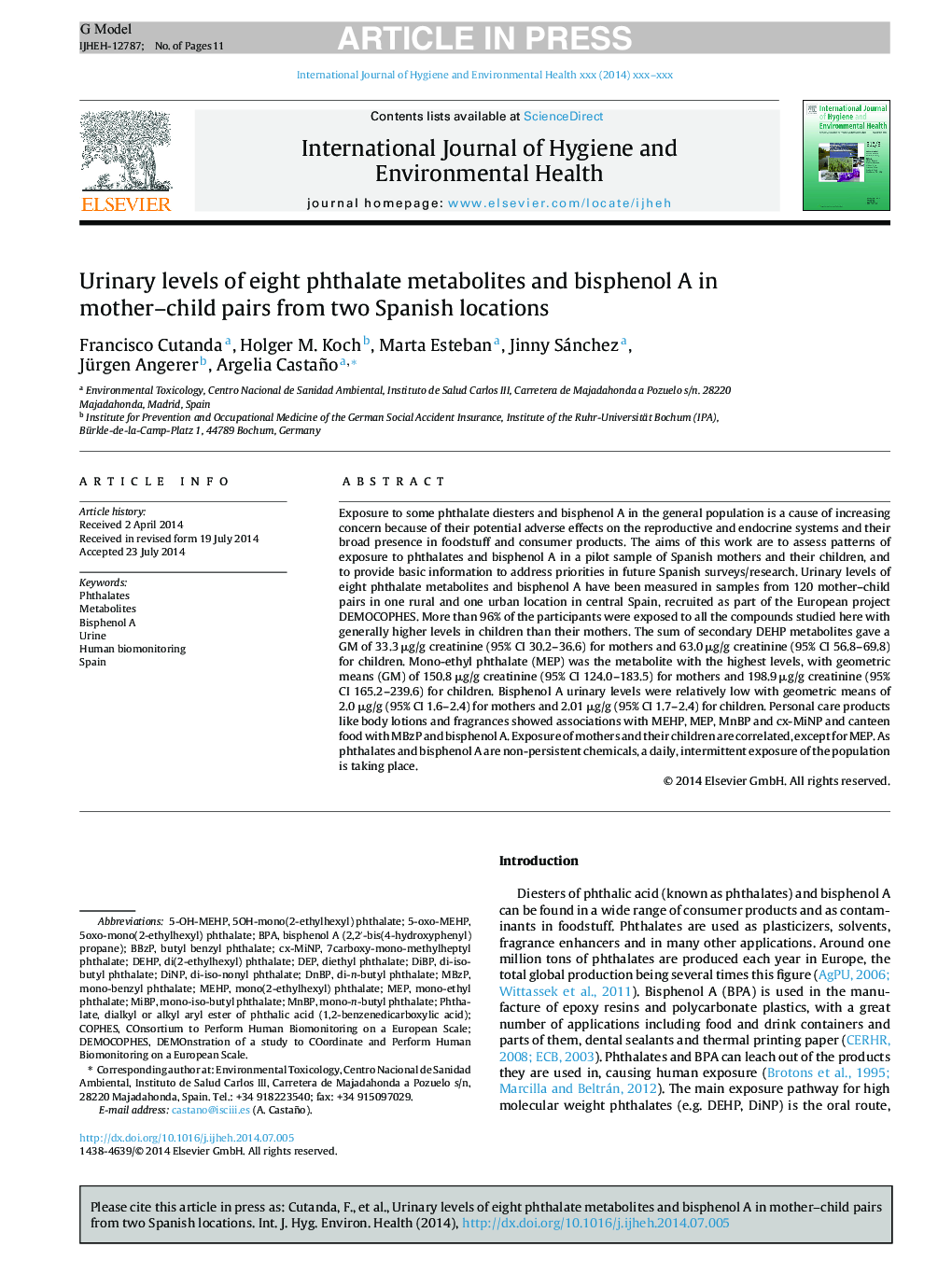| Article ID | Journal | Published Year | Pages | File Type |
|---|---|---|---|---|
| 5854610 | International Journal of Hygiene and Environmental Health | 2015 | 11 Pages |
Abstract
Exposure to some phthalate diesters and bisphenol A in the general population is a cause of increasing concern because of their potential adverse effects on the reproductive and endocrine systems and their broad presence in foodstuff and consumer products. The aims of this work are to assess patterns of exposure to phthalates and bisphenol A in a pilot sample of Spanish mothers and their children, and to provide basic information to address priorities in future Spanish surveys/research. Urinary levels of eight phthalate metabolites and bisphenol A have been measured in samples from 120 mother-child pairs in one rural and one urban location in central Spain, recruited as part of the European project DEMOCOPHES. More than 96% of the participants were exposed to all the compounds studied here with generally higher levels in children than their mothers. The sum of secondary DEHP metabolites gave a GM of 33.3 μg/g creatinine (95% CI 30.2-36.6) for mothers and 63.0 μg/g creatinine (95% CI 56.8-69.8) for children. Mono-ethyl phthalate (MEP) was the metabolite with the highest levels, with geometric means (GM) of 150.8 μg/g creatinine (95% CI 124.0-183.5) for mothers and 198.9 μg/g creatinine (95% CI 165.2-239.6) for children. Bisphenol A urinary levels were relatively low with geometric means of 2.0 μg/g (95% CI 1.6-2.4) for mothers and 2.01 μg/g (95% CI 1.7-2.4) for children. Personal care products like body lotions and fragrances showed associations with MEHP, MEP, MnBP and cx-MiNP and canteen food with MBzP and bisphenol A. Exposure of mothers and their children are correlated, except for MEP. As phthalates and bisphenol A are non-persistent chemicals, a daily, intermittent exposure of the population is taking place.
Keywords
MnBPmono-iso-butyl phthalateMEHPdi-n-butyl phthalatedi-iso-nonyl phthalateMBzPDEMOnstration of a study to COordinate and Perform Human biomonitoring on a European ScaleDEMOCOPHESMiBPmono-n-butyl phthalateCOnsortium to Perform Human biomonitoring on a European ScaleBPADEHPBBzPDnBPDIBPDEPMEPDiNPmono(2-ethylhexyl) phthalateUrineSpainMono-benzyl phthalatebutyl benzyl phthalateBisphenol AHuman biomonitoringdi(2-ethylhexyl) phthalateDiethyl phthalatedi-iso-butyl phthalatePhthalatesPhthalateMetabolitesmono-ethyl phthalateCOPHES
Related Topics
Life Sciences
Environmental Science
Health, Toxicology and Mutagenesis
Authors
Francisco Cutanda, Holger M. Koch, Marta Esteban, Jinny Sánchez, Jürgen Angerer, Argelia Castaño,
